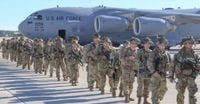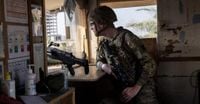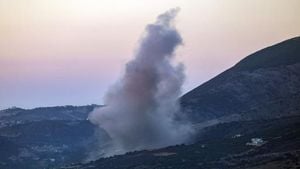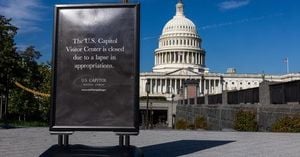The United States is entering a new chapter in its two-decade military involvement in Iraq, as officials confirm the start of a significant troop drawdown under a deal struck with Baghdad in 2024. The move, announced by the Pentagon on October 2, 2025, signals a transition from direct combat operations against the Islamic State (ISIS) to a more conventional security partnership, fundamentally reshaping the U.S.-Iraq relationship and shifting the American military’s regional priorities.
For years, the U.S. military presence in Iraq has been a defining feature of the country’s security landscape. At the start of 2025, roughly 2,500 American troops were stationed across Iraq, serving as part of the Global Coalition formed in 2014 to counter ISIS’s rapid territorial gains. Now, as the U.S. begins to wind down its mission, fewer than 2,000 personnel will remain, with most redeployed to Erbil in the Kurdistan Region of northern Iraq and a small contingent in Baghdad focused on security cooperation roles, according to Pentagon statements cited by Shafaq News and Al-Monitor.
The drawdown is part of the U.S.-Iraq Strategic Framework Agreement signed last year, which outlines a shift from a field-based military presence to a partnership built on strategic cooperation in security, economic, and technological fields. Pentagon spokesperson Sean Parnell described the transition as “a shared success in defeating ISIS and a step toward a lasting security partnership between the United States and Iraq, consistent with American interests, the Iraqi constitution, and the Strategic Framework Agreement.” He emphasized that the U.S. would maintain close coordination with Baghdad and coalition partners to ensure a “responsible transition.”
According to a senior Iraqi security official, the withdrawal began weeks before the public announcement, with U.S. forces departing bases in Baghdad and Ain al-Asad in western Iraq. Some troops have redeployed to Erbil, while others have left the country altogether. The official, who spoke on condition of anonymity, noted, “Only a very small number of advisers remain within the Joint Operations Command.” The drawdown, he added, is proceeding according to an agreed-upon schedule, though no precise figure for the number of withdrawn troops has been released.
The evolution of the partnership is being welcomed by Iraq’s Coordination Framework (CF), an alliance of Shiite political parties that leads the current government. Uday al-Khadran, a CF member, told Shafaq News that the Pentagon’s decision “serves Iraq’s sovereignty and national interests,” describing it as “a significant shift in relations between Iraq and the United States — from a field-based military presence to a partnership built on strategic cooperation in security, economic, and technological fields, strengthening Iraq’s capacities and safeguarding its sovereignty.”
The alliance has long insisted that foreign forces in Iraq operate under Iraqi decisions and in accordance with the national constitution. Al-Khadran added, “Today, we are witnessing a practical step toward this goal. The coming stage requires enhancing Iraqi security forces’ capabilities and broadening international cooperation to support the country’s stability.” He concluded that shared interests between Baghdad and Washington should be “based on mutual respect, free from any tutelage or interference in Iraq’s internal affairs, ensuring independence of decision-making and protecting the achievements of the Iraqi people.”
As the U.S. reduces its direct combat role in Iraq, responsibility for countering ISIS remnants falls squarely on Baghdad. “We’ve trained them for a decade, and they have the capability to counter ISIS, and they have the will,” a senior U.S. defense official told reporters, according to Al-Monitor. The official noted that the burden of countering ISIS inside Iraq will now fall to Iraqi forces, with the U.S. shifting its focus to threats emanating from neighboring Syria.
The international coalition to defeat ISIS, operating under the Combined Special Operations Joint Task Force–Levant, will consolidate its operations and relocate to Erbil. The Kurdish capital will host the remaining U.S. troop presence, which will primarily focus on counter-ISIS missions in Syria. Meanwhile, U.S. forces that remain in Baghdad will serve in bilateral security cooperation roles, supporting the transition to a more conventional partnership similar to those the U.S. maintains with dozens of other countries.
While the exact number of U.S. troops to remain in Iraq is still being discussed with the Iraqi government, officials reiterated that fewer than 2,000 personnel will stay once the transition is complete. Iraqi Prime Minister Mohammed Shia al-Sudani said in July 2025 that the U.S. and Iraq will meet by the end of the year to “arrange the bilateral security relationship” between the two countries, further cementing the new era of cooperation.
With the focus shifting to Syria, the U.S. military presence there remains “conditions-based,” as described by a senior defense official. Currently, more than 900 but fewer than 2,000 U.S. troops are stationed in Syria, and no withdrawals have occurred in the past four to five months. The official explained that the situation is being closely monitored, especially given the fragility of Syria’s relatively new government. “There’s fragility associated with the new government that’s very well understood, including articulated by the government itself. And, so, we’re just watching to see how the government forms and what the security apparatus looks like before we make any other decisions with respect to U.S. forces.”
Despite ISIS’s territorial defeat, the group still maintains fighters and operational capabilities in Syria. The Pentagon estimates that around 9,000 ISIS militants are detained in Syria, alongside 29,000 displaced persons in camps that pose significant risks of radicalization and recruitment. “These camps are incubators for radicalization,” the U.S. official warned, calling on foreign governments to repatriate their citizens. In a new development, the United Nations will take over management of these camps from NGOs, while the U.S.-backed Syrian Democratic Forces (SDF) continue to provide security, with American support as needed. Last week, the top U.S. commander for the Middle East announced the creation of a Joint Repatriation Cell in northeast Syria to coordinate the return of foreign nationals from the camps.
The U.S. military’s transition in Iraq is widely seen as a recognition of the progress made by Iraqi security forces and the diminished threat posed by ISIS from Iraqi territory. A senior U.S. military official stated that ISIS “no longer poses a persistent threat to the Iraqi government or to America from Iraqi territory,” calling the shift “a major achievement that enables Iraq to assume greater responsibility for its own security.”
Looking ahead, the U.S.-Iraq partnership aims to support both countries’ security interests, strengthen Iraq’s capacity to attract foreign investment, and enhance its role as a regional leader. Pentagon spokesperson Sean Parnell summed up the sentiment, saying the transition “marks an effort to transition to a lasting U.S.-Iraq security partnership in accordance with U.S. national interests, the Iraqi Constitution, and the U.S.-Iraq Strategic Framework Agreement.”
As American troops pack up from bases that have housed them for years, both nations face a future defined less by the presence of foreign soldiers and more by the strength of their diplomatic and security cooperation. The coming months will reveal how this new partnership shapes the stability of Iraq, the broader region, and the ongoing fight against ISIS.





